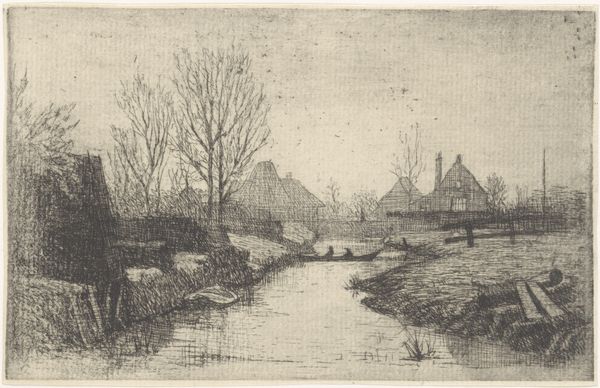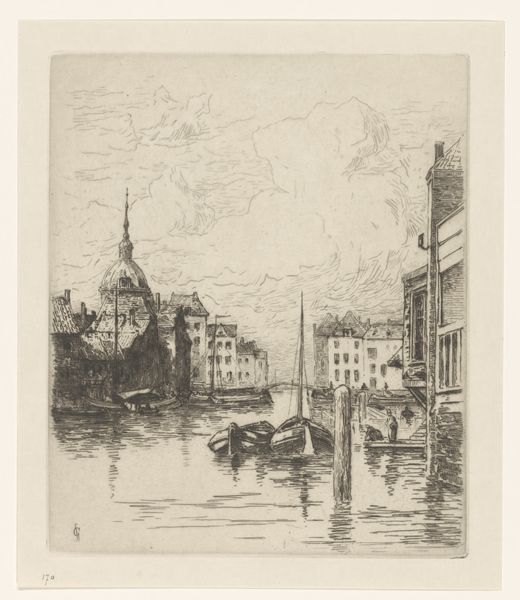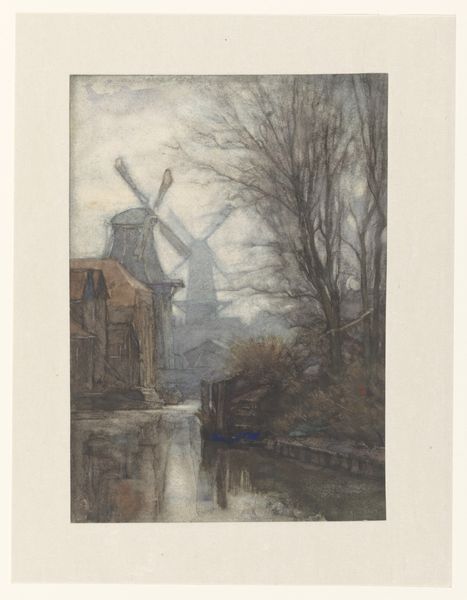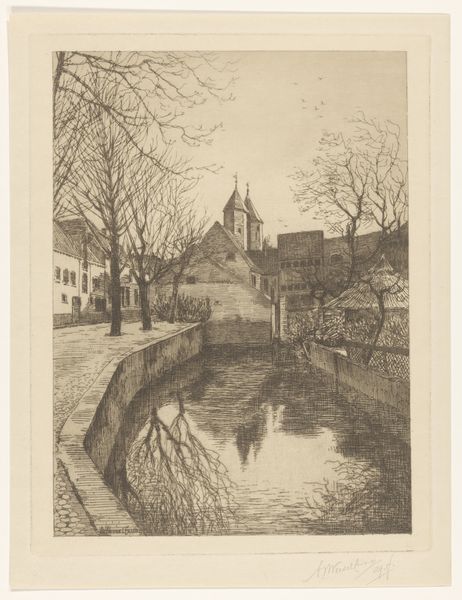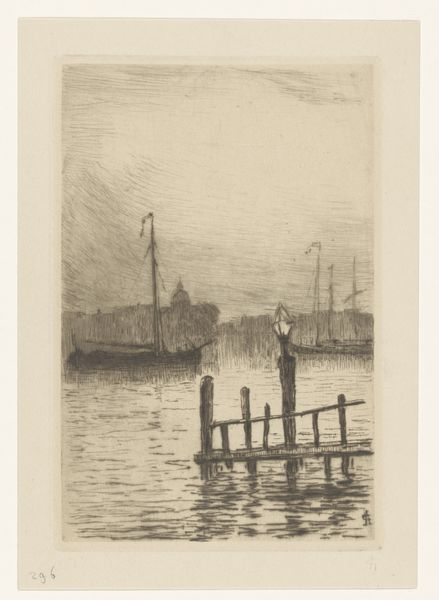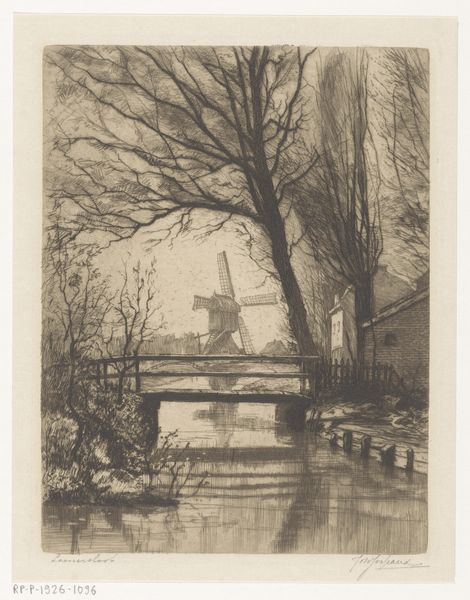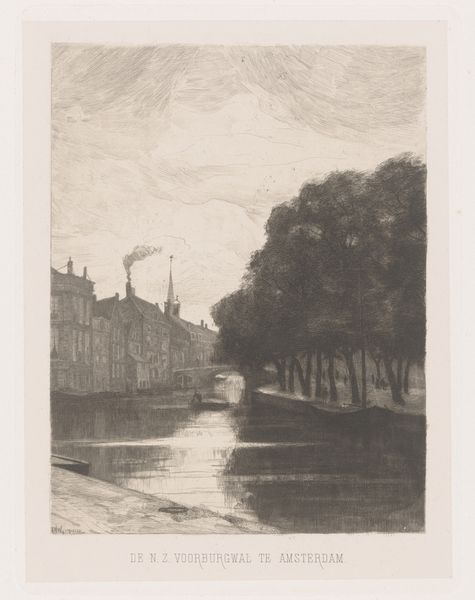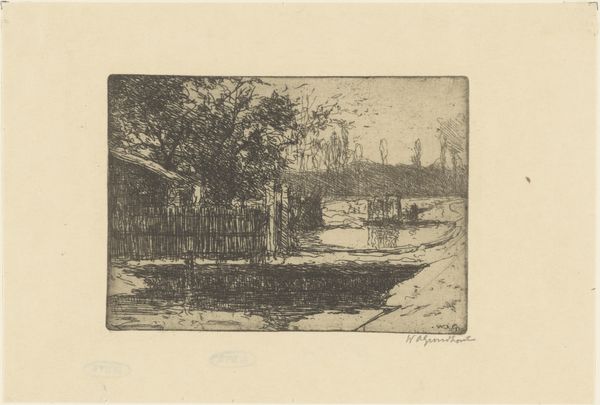
print, etching
#
dutch-golden-age
# print
#
etching
#
landscape
#
realism
Dimensions: height 189 mm, width 121 mm
Copyright: Rijks Museum: Open Domain
Editor: This is Philip Zilcken's "Landschap met vaart, molen en loopbrug," or "Landscape with Canal, Mill and Footbridge," from 1879. It's an etching, and it feels…quiet, almost melancholy. The lines are so fine and intricate. What draws your eye in this piece? Curator: As a materialist, I immediately look at the etching technique itself. Consider the labour involved, the repetitive action of incising those lines into the metal plate. And that the “quietness” you feel, is produced through those very material means. Doesn’t that alter the supposed divide between artistic skill and the more humble process of craft? Editor: I never thought of it that way. It’s true, those tiny marks create such a stillness…the landscape relies on those materials and tools. But what about the social context? Were mills and canals common subjects at the time? Curator: Absolutely. Think about the Netherlands in the late 19th century. Canals were vital transportation routes, mills central to industry and agriculture. The choice to depict this seemingly ordinary scene becomes a statement about labour and the Dutch economy itself. We should also examine the availability of these printed images for consumption. Who would be able to access such pieces, and why? Editor: So, this seemingly simple landscape speaks volumes about the era's material conditions. It's not just a pretty picture, but a reflection of production, consumption and labour. I am starting to look differently at prints, recognizing they capture broader implications of their time. Curator: Precisely. Focusing on process and materials gives us insight that a purely aesthetic analysis might overlook. We shift away from seeing this print merely as representation towards understanding its production. What a fresh view!
Comments
No comments
Be the first to comment and join the conversation on the ultimate creative platform.
